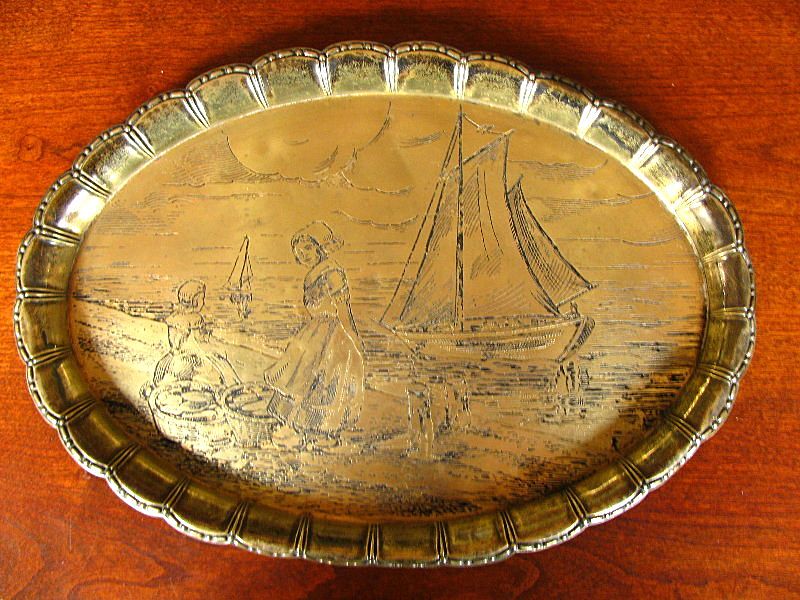Engraving Methods: Old and New Engraved Tags
Developed in the fifteenth century, engraving was considered a goldsmith’s art. The first form of engraving was line engraving, which was practiced throughout Italy. This process consisted of carvings made into a hard substance and then printed onto paper. The engraved tags were etched with bold designs and intricate details that were filled with ink.
Given the printing process involved, the images would appear reversed so the plates had to be etched backwards. Artists who created pieces with this line engraving method generally used copper plates due to its softness, which kept the engraved edges from appearing too harsh.

An engraved antique brass tray.
Steel line engraving, though, was also practiced beginning in the 1820s. Although copper was heralded for its softer feel, steel was discovered to be a more durable option thanks to its firmness. Allowing finer detail and resistance to wear, steel engraving also required new, stronger tools for engraved tags.
Engraved stainless steel tags allowed for numerous prints without any signs of deterioration, reducing costs and giving new life to the printing industry. Both steel and copper engravings as art forms died down after the 1840s despite the incredible detail and skill they demonstrated.
Modern Practices For Engraved Tags and Nameplates
Engraving methods have grown greatly since this time, with mechanical engraving and laser engraving processes as popular alternatives. Rather than producing fine art, though, these high-speed options are used to create engraved aluminum tags, engraved stainless steel tags, and other engraved tags and nameplates.
Here at Yeuell Nameplate & Label we have to ability to take electronic design files, such as logos or images, and mechanically engrave them directly onto the desired nameplate. We engrave materials such as brass and aluminum with a high-speed cutting tool for engraved rotary tags.
On the other hand, laser engraving can chisel details to the minuscule .005”. At Yeuell we use a CNC driver with a laser beam to achieve these narrow lines. Representing the latest in engraving technology, lasers are commonly used for engraved stainless steel tags and plastic tags thanks to its quick, detailed capabilities. It does not require any ink for its markings and it also does not require tools that come into contact with the metal, which can easily wear out in mechanical engraving.
Although engraving has come a long way, its roots are in meticulous, handmade craftsmanship. Take a look at these collections of antique nameplates that were crafted with care on the Yeuell blog.
Order Engraved Tags and Nameplates
Have you decided which material is right for your custom engraved tags? Request a quote today for your engraving needs. You can also request a free sample kit of brass engraved tags, rotary engraved tags, and more – to determine for yourself how Yeuell’s many printing processes and materials work together to create long-lasting, colorful and effective ID and marking signage for industrial and municipal needs.
Need engraved aluminum tags or engraved stainless steel tags? Return to our custom Nameplate & Label Materials page.

 © 2024 Yeuell Nameplate & Label, 17 Gill Street, Woburn, MA 01801 |
© 2024 Yeuell Nameplate & Label, 17 Gill Street, Woburn, MA 01801 | 

